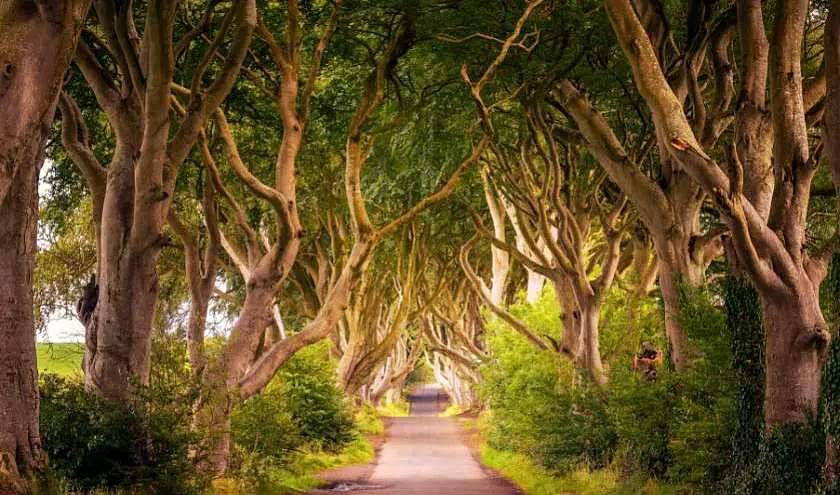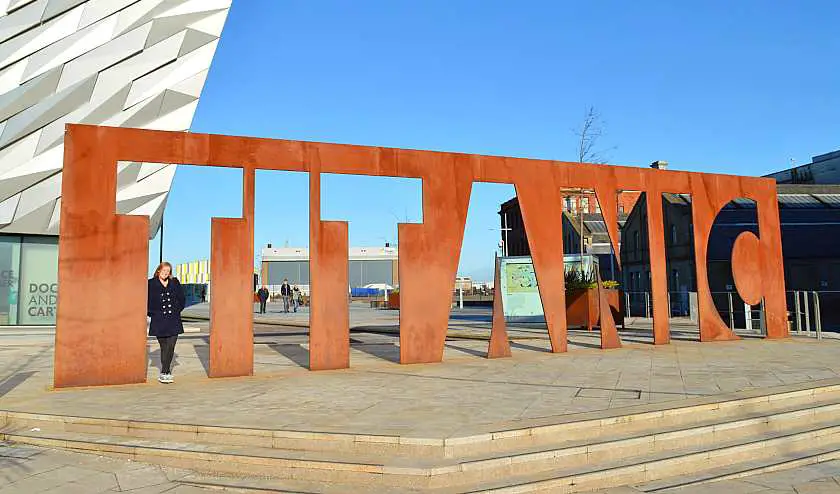Top 10 frickin’ awesome facts about the Giant’s Causeway!
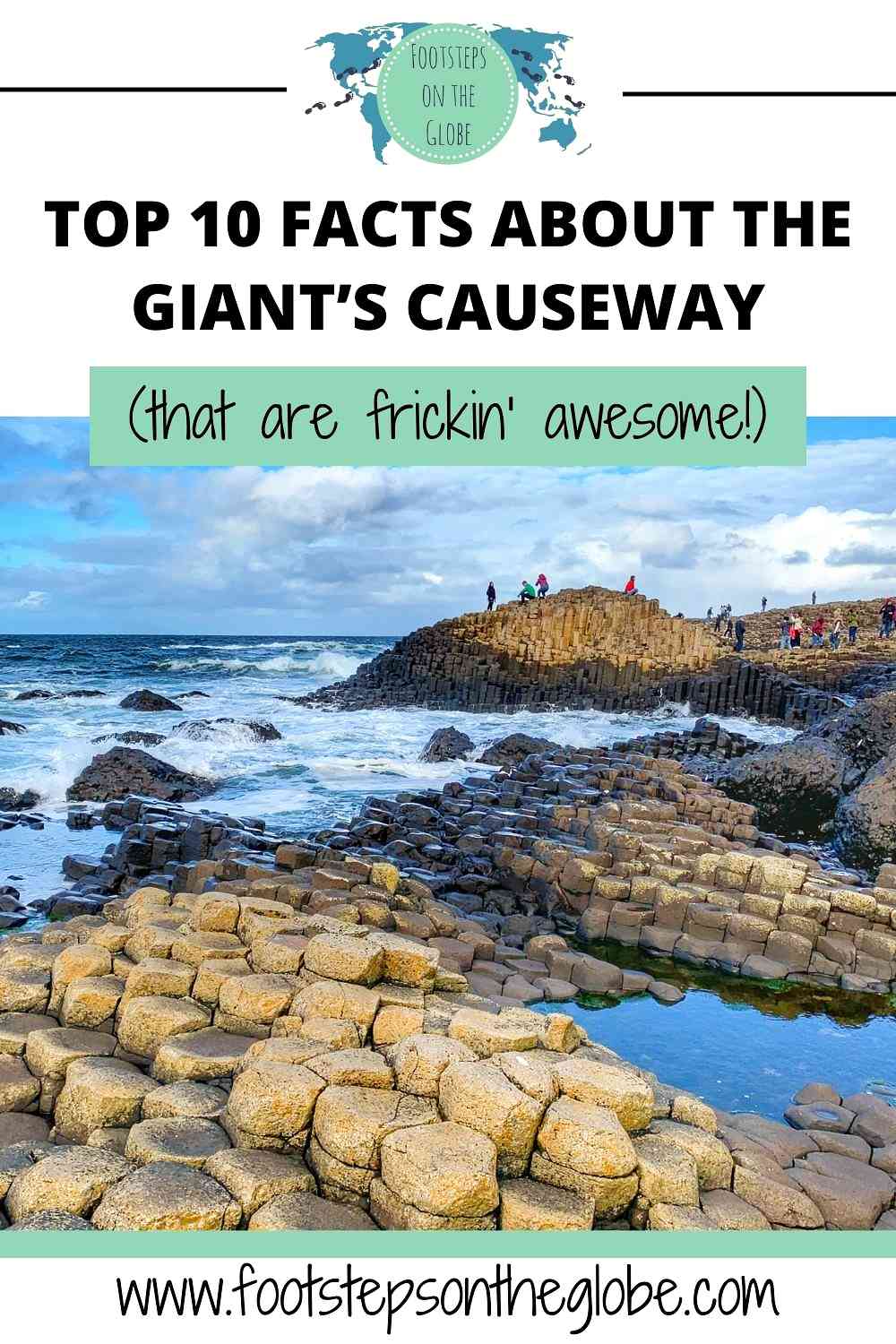
Top 10 Frickin’ awesome facts about the Giant’s Causeway!
The Giant’s Causeway is one of my favourite places to visit in Northern Ireland! Its raw beauty is awe-inspiring and is a totally unmissable stop when visiting Belfast! Want to know more about this incredible place? Here are my top 10 frickin’ awesome facts about the Giant’s Causeway!
If you’d like to visit the Giant’s Causeway, why not check out a day tour from Belfast.
Other Northern Ireland posts you might like…
- Top 10 things to do in Belfast (as recommended by a local!)
- Find the most iconic Game of Thrones locations in Northern Ireland!
- How to get from Belfast to the Giant’s Causeway (by car, train, bus and tour!)
1) The Giant’s Causeway was formed by a volcanic eruption over 50 million years ago!
One of the most fascinating facts about the Giant’s Causeway is that is was formed by a volcanic eruption around 50 to 60 million years ago!
The thick lava ran down the cliff face so quickly that it dried and contracted into the distinctive honey-comb shaped stones and step-like columns that you see today.
This is also why the rocks form by the cliff edge and seem to disappear right into the sea – how cool is that??
It’s estimated that the Giant’s Causeway is made up of over 40,000 interlocking basalt hexagon shaped columns that can reach as high as 39 feet!
Many of the columns fit together so tightly that when you view it from the cliff edge, it looks like a man-made street!
If you’d like to visit the Giant’s Causeway, I recommend going on a Belfast to Giant’s Causeway Day Tour Trip.
You’ll spend a day visiting Northern Ireland’s most stunning destinations, which not only includes a visit to the Giant’s Causeway but stops at Cushendun Caves, Carnlough Harbour, the Dark Hedges and Carrickfergus and Dunluce Castles.
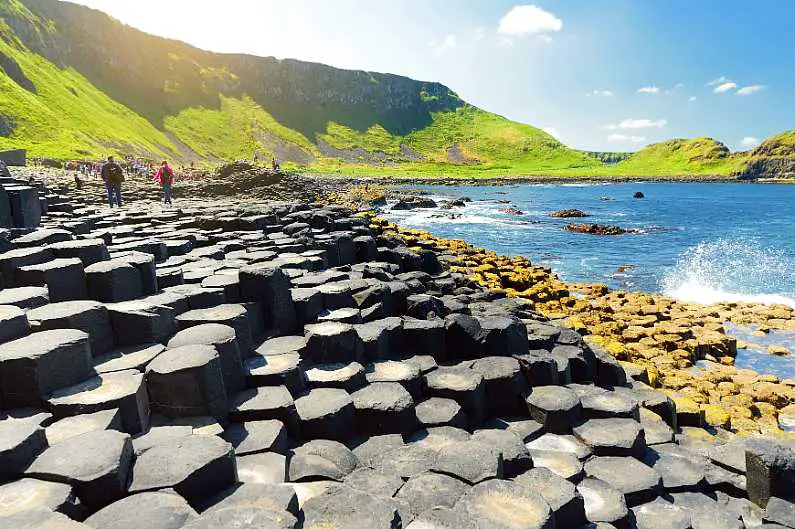
2) The Giant’s Causeway is named after a real life giant (sort of!)
According to local folklore, the causeway was built by a giant named Finn McCool (Fionn mac Cumhaill in Irish mythology).
The legend goes that Finn McCool was challenged to a fight by Benandonner, another giant from Scotland. But rather than cross the sea to confront his Scottish rival directly, Finn decided to build a causeway across the North Channel which would serve as a path for both giants to meet.
In the various versions of the legend, there are different outcomes to the encounter. In one version, Finn defeats Benandonner. Whilst in another, Finn disguises himself as a baby to fool the Scottish giant and avoid the confrontation.
Regardless of the specific details, the legend of Finn McCool and the Giant’s Causeway is deeply ingrained in Irish folklore and has been passed down through generations.
It also adds some Irish magic to this already magical wonder! 😉
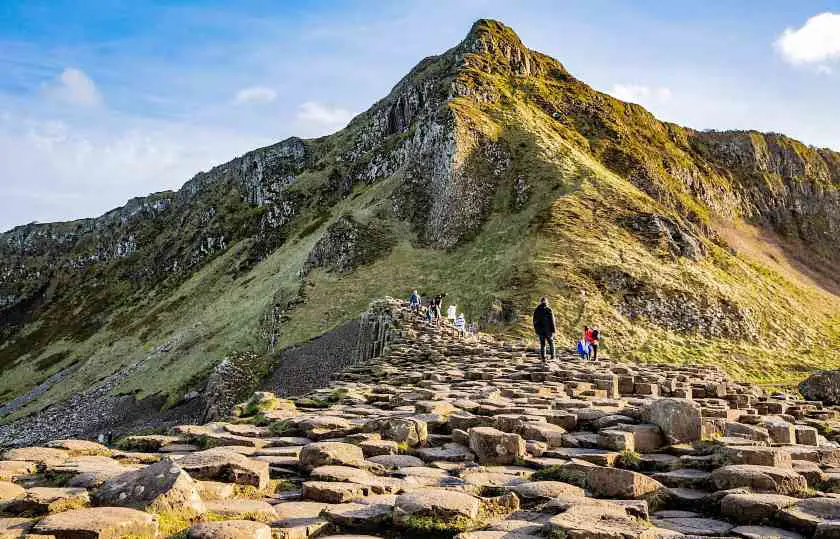
3) The Giant’s Causeway has been listed as one of the world’s top 100 geology sites
The Giant’s Causeway was first documented in 1693 and has been intensively studied by geologists ever since.
It was selected as one of the world’s most important geology sites by the International Union of Geological Sciences in 2022, thanks to its role in the development of geology as a science.
The causeway’s inclusion in lists of top geological sites is based on its extraordinary geological features. In addition to its educational value and contribution to the understanding of Earth’s processes.
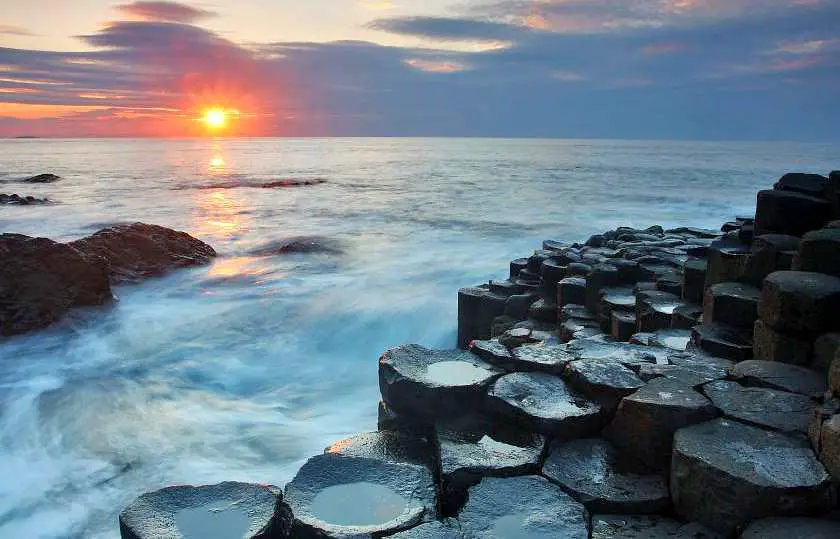
4) The Giant’s Causeway was voted the 4th best natural wonder in the UK
It should come as no surprise that the EPIC Giant’s Causeway was voted amongst the top natural wonders in the UK in a recent survey!
The unique rock formations, dramatic cliffs and crashing waves makes the Giant’s Causeway quite the sight to behold!
There are some experiences in life that you know are going to be amazing and you know you’ll never forget. But I had no idea the Giant’s Causeway would have such an effect on me!
I am completely awestruck every time I visit.

5) The Giant’s Causeway is the only World Heritage Site in Northern Ireland
The Giant’s Causeway received UNESCO World Heritage status in 1986 due to its outstanding geological features, including its unique hexagonal basalt columns.
While Northern Ireland is known for its rich cultural and natural heritage, the Giant’s Causeway is its only UNESCO World Heritage Site!
The designation recognises the global significance of the site’s geological formations and its contribution to the understanding of Earth’s history.
Book your tickets to see the Giant’s Causeway from Belfast.
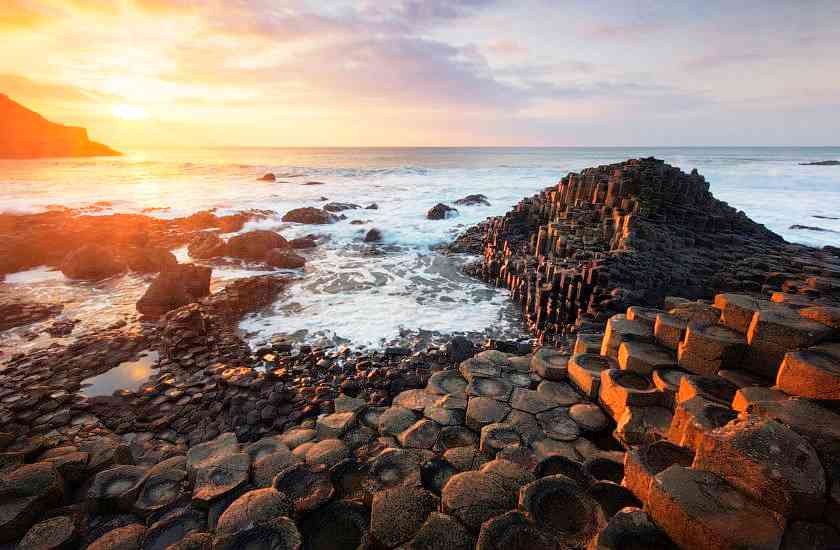
6) The Causeway’s rocky coastline has caused many shipwrecks
While the Giant’s Causeway itself is not a major cause of shipwrecks, the rocky coastline and challenging weather conditions around Northern Ireland have unsurprisingly posed major risks to passing ships.
The region has witnessed various shipwrecks throughout history but none more poignant than in 1588 when over 1,000 men were sadly killed when a Spanish ship sank after hitting one of the rocks.
Efforts have been made over the years to improve navigation safety and reduce the risk of shipwrecks with modern technology. However, the historical significance of shipwrecks in the region underscores the challenges faced by sailors in the past when navigating these waters.
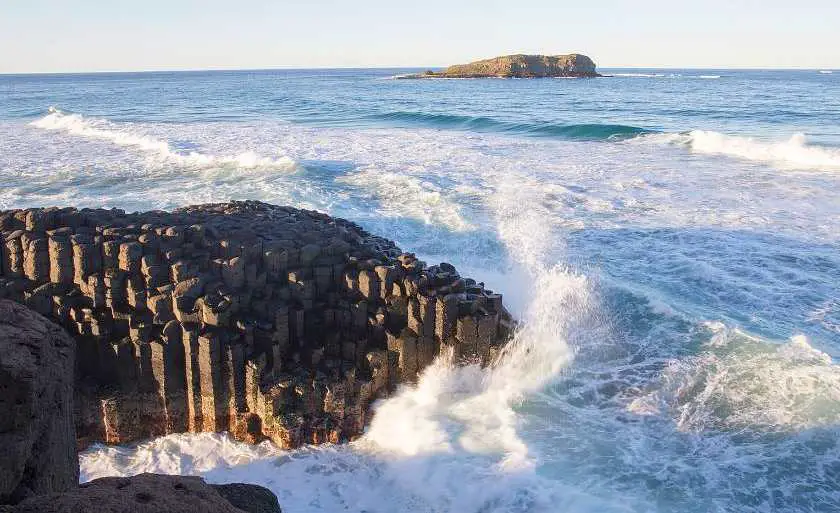
7) Many of the Giant Causeway’s rock formations have special names and legends attached to them
The Giant’s Causeway is not only a geological wonder but also a place rich in folklore and legends!
Many of its rock formations have been given special names, and each is often accompanied by a story or legend. These include:
- The Giant’s Organ – named after its resemblance to a large musical organ, the rock formation has puzzled geologists for years. Most of the columns at the Giant’s Causeway have hexagonal shapes. But the organ rock has more irregular and cylindrical columns, therefore raising questions about the specific geological processes that created it.
- The Giant’s Wishing Chair – according to local legend, this rock in the shape of a large chair grants wishes. That’s right! All you need to do is have a seat, make a wish and wait for your dreams to come true!
- The Giant’s Boot – legend has it that the giant, Finn McCool turned back from his fight with the Scottish giant and lost his boot along the pathway as he ran back in fear. Which is apparently why there is a boot shaped rock still there today!
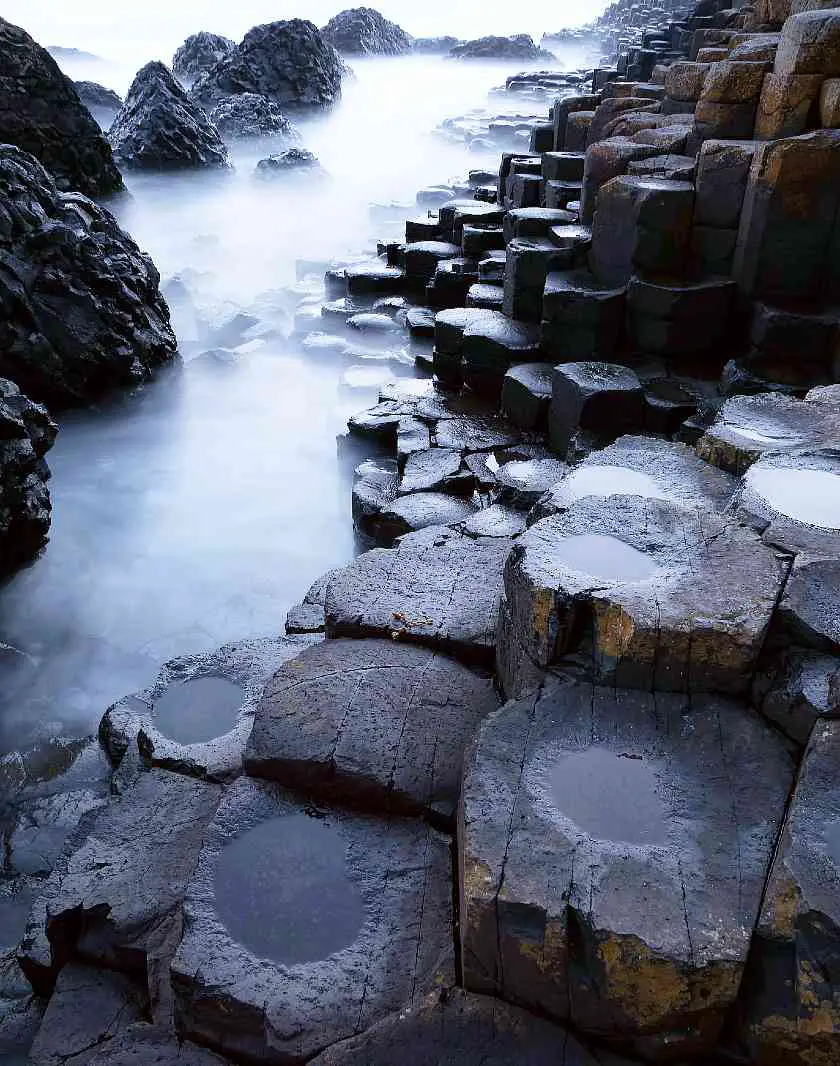
8) Humans settled around the Giant’s Causeway in the 19th century, but the site is now uninhabited
The area around the Giant’s Causeway has been known and visited for centuries but has never been a site of permanent human settlement.
The region around the Giant’s Causeway has been used for various purposes, including tourism, agriculture and fishing. However, today the Giant’s Causeway is a popular tourist attraction managed by the National Trust.
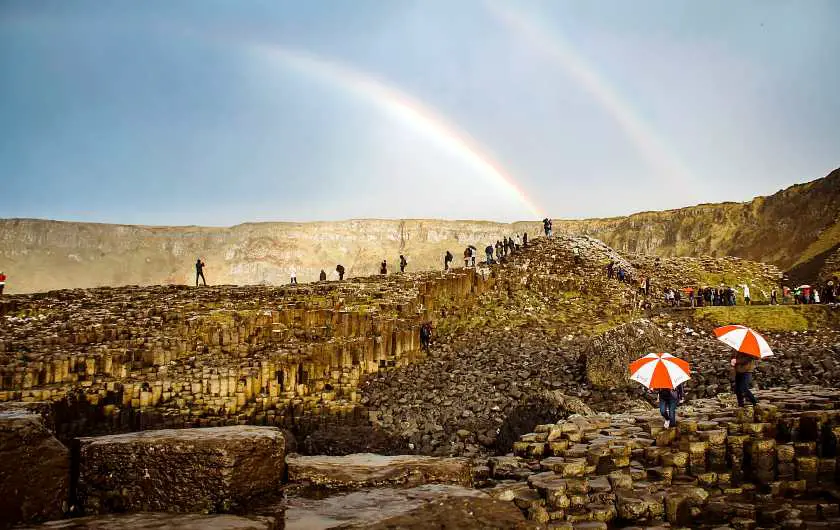
9) The Giant’s Causeway is a popular filming location
The Giant’s Causeway has featured in many films and TV shows, including: “Dracula Untold” and “The Simpsons”.
Most famously though the causeway featured in the film, “Hell Boy 2: The Golden Army”. It’s in the backdrop of a scene where a wounded Hellboy is taken by Liz and Abe to the Golden Army’s location in the Giant’s Causeway in an attempt to take the spear from Hellboy’s chest.
Anyone else a Hellboy fan back in the day? Such a great movie!
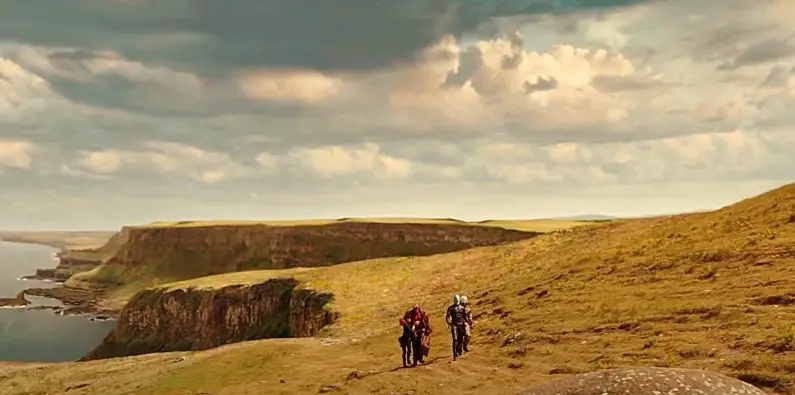
10) The Giant’s Causeway was home to the world’s first commercially run ‘hydro-electric’ powered tram
The causeway’s first tram opened in 1883 and was hailed as the world’s first commercially run ‘hydro-electric’ powered tram system. The line ran for 91⁄4 miles between the Giant’s Causeway and Bushmills Railway.
Sadly, the line was closed due to lack of funding. However, today’s diesel and steam operated tourist tram runs over part of the old tramway’s course as a sweet homage to the past.
You can learn more fun facts like this on the Belfast to Giant’s Causeway Day Tour Trip. You’ll spend a day visiting Northern Ireland’s most stunning destinations, which not only includes a visit to the Giant’s Causeway but to Cushendun Caves, Carnlough Harbour, the Dark Hedges and Carrickfergus and Dunluce Castles!
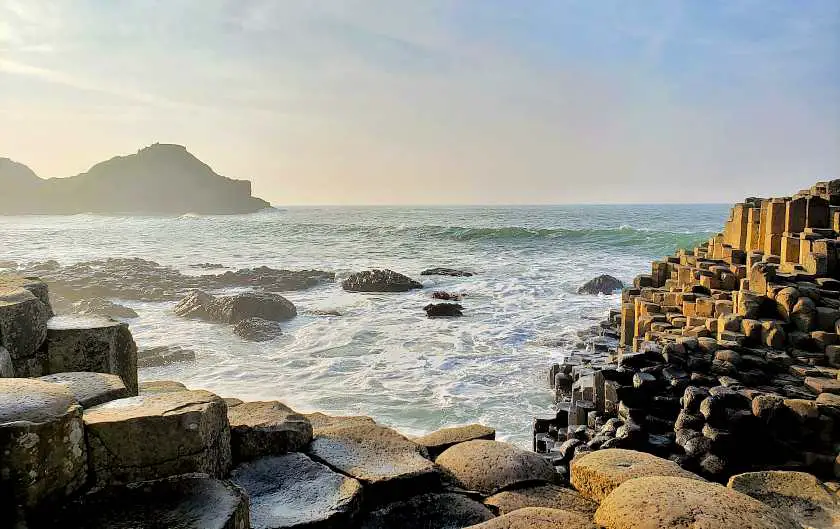
Other Northern Ireland posts you might like…
- Top 10 things to do in Belfast (as recommended by a local!)
- Find the most iconic Game of Thrones locations in Northern Ireland!
- How to get from Belfast to the Giant’s Causeway (by car, train, bus and tour!)
Which facts about the Giant’s Causeway were your favourite? 😊

Quick FYI guys – this ‘Facts about the Giant’s Causeway’ post contains affiliate links to various tours. I will receive a small commission for purchases made through these links at no extra cost to you. Thanks so much for your support!

